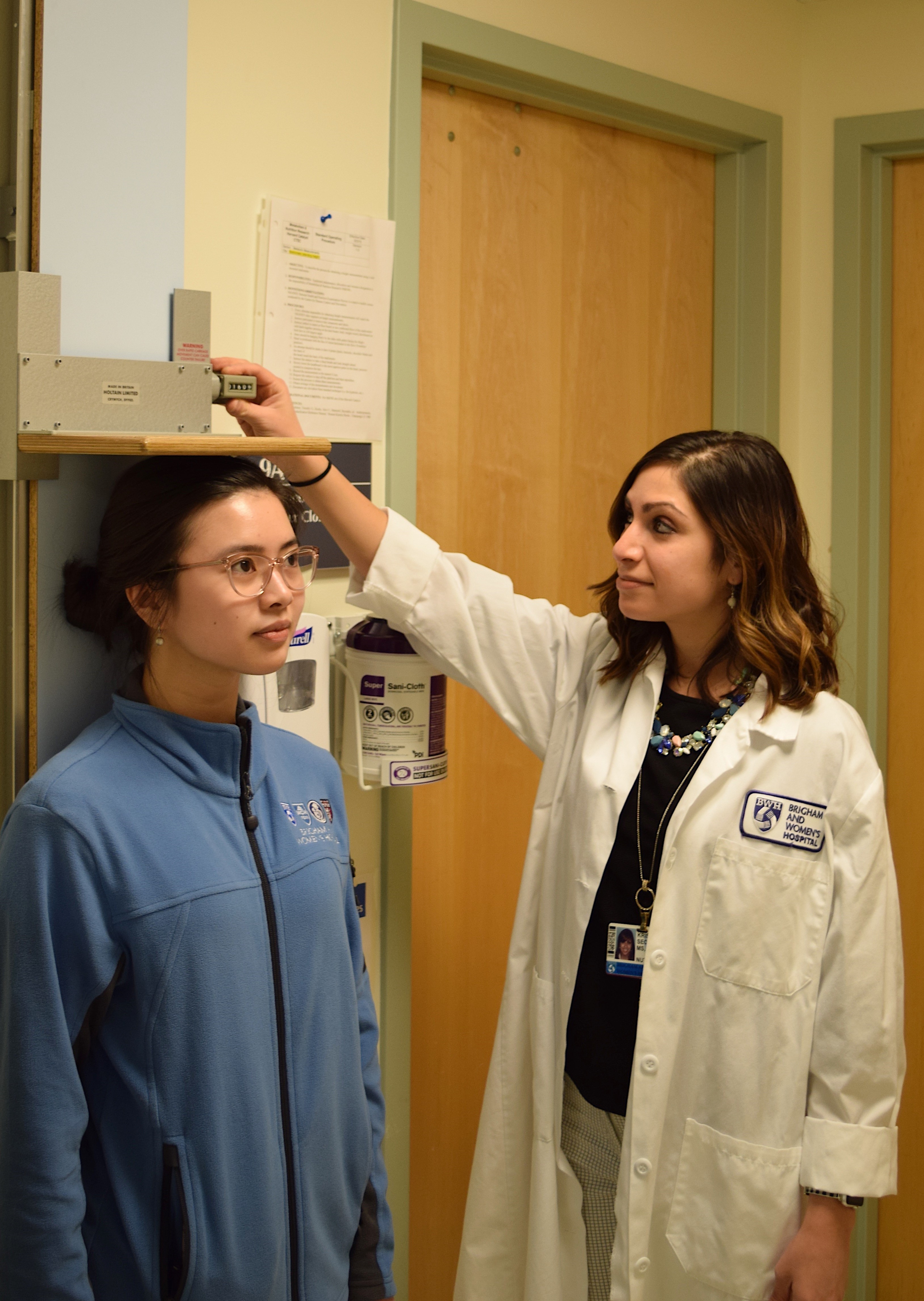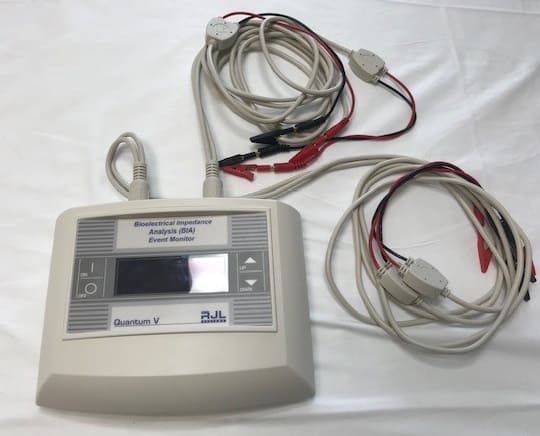
Body Composition &
Anthropometrics


Bioelectical Impedance Analysis (BIA)
- Noninvasive procedure that measures %fat mass and %lean mass through low-level electric current.
- The machine measures how the electric current is impeded in different tissues, lean tissue is generally considered "high conductive" whereas fat and bone are poor conductors of electricity.
- When combined with subject's height, weight, age, and gender the BIA results allow us to determine a % Body Fat percentage.
- This device has been approved by the Department of Health and Human Services as of February 28, 2006 as Regulatory class II (No. 21 CFR §870.277f); additionally, this device was approved by the FDA as the BIA device classifies as a class II medical device (regulation No. 870.2770; 501k No. K830292).
For more information on BIA testing, please visit our patient-education handout: BIA Resource Information
Indirect Calorimetry (RMR Testing)
- Measures Resting Metabolic Rate (RMR), or how many calories you burn just to maintain your body’s basic functions.
- Depending on body size, a healthy adult may burn from 1000 to 3000 Kcal per day just to maintain normal body functions.
- Indirect Calorimetry calculates heat production by measuring gas exchange; oxygen consumption and carbon dioxide production. The oxygen consumed and the carbon dioxide produced are measured to provide an indirect assessment of caloric expenditure.
- Gold standard in measuring energy needs for participants.
- This device, the VMAX 229 Series from Sensormedics has been approved by the FDA as a class II medical device, 501k no. K942211.
For more information on Calorimetry testing, please visit our patient-education handout: Calorimetry Resource Information
Hours of Calorimetry in 2019
BIA Tests in 2019
